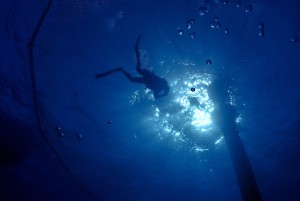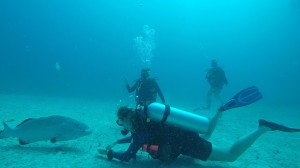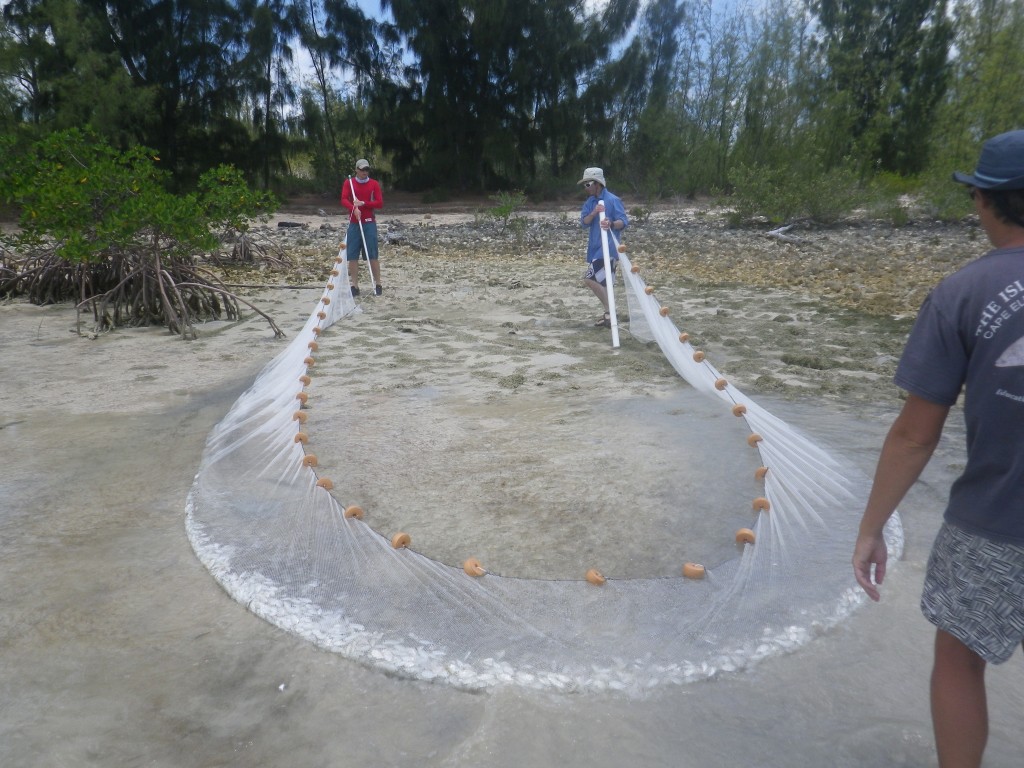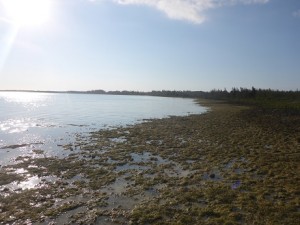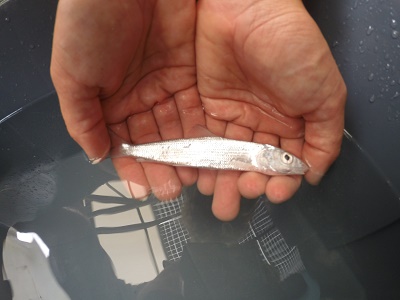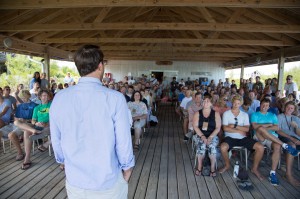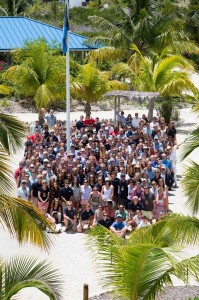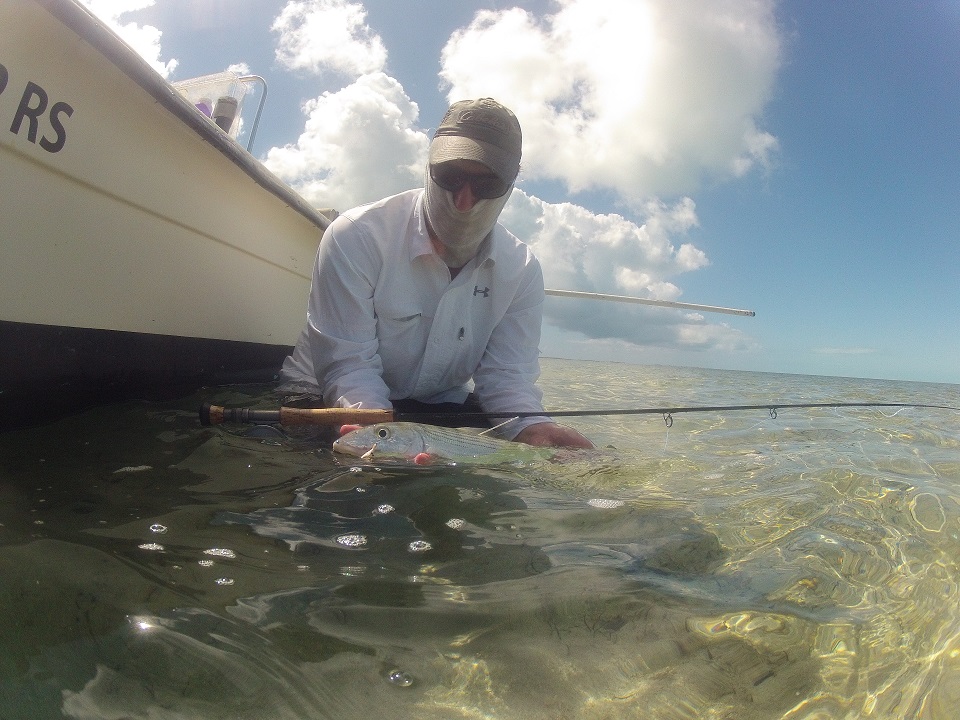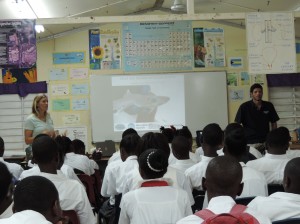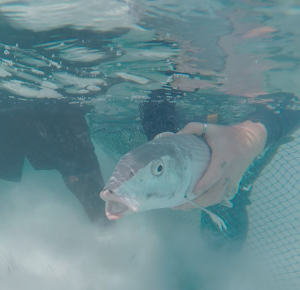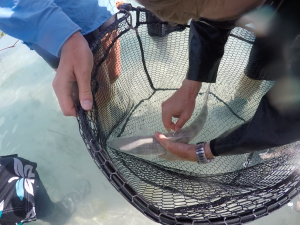Sometimes all it takes is a few minutes with a trusting grouper to realize our impact on the ocean and how we can make a difference. This week, the Flats Ecology and Conservation Team at the Cape Eleuthera Institute went to retrieve a temperature logger located at the base of the Aquaculture Cage.
Located 90 feet deep near the wall of the Exuma Sound, the Cage serves as an aggregation spot for large marine creatures. Many fishermen frequent the area to catch large jacks, snappers, and groupers attracted to the cage.
Within minutes, a well-known large black grouper, affectionately named Bradley, approached the divers. Bradley came quite close to the group, turning and showing multiple hooks, wire leaders, and weights hanging from his jaw and gills. He moved in closer as Kelly Hannan, a University of Illinois graduate student, took out a pair of scissors.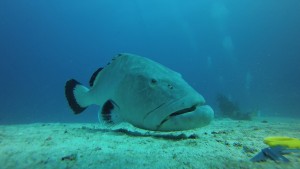
Bradley investigated the scissors and seemed to decide that Kelly was not a threat. He let her cut off two feet of tangled wire leader and three fishing weights that were hanging from the right side of his mouth. Unfortunately, the scissors were not strong enough to cut the hooks out, but the team hopes to return to the Cage with wire cutters to remove them from Bradley’s jaw in the near future.
Bradley seemed to understand that no harm would come to him from these divers and was very calm throughout the procedure. He continued to follow the divers throughout the rest of the dive.
Later that week, at the same dive site, the Flats team removed over 50 feet of fishing line from a nearby reef. Another wire trace with lead weights was picked up near the base of the Cage.
Although these dives had positive outcomes, they serve as a reminder of the impacts of fishing pressure and pollution on the marine environment. Thanks to Bradley, we had a very personal reminder of our relationship with the ocean and how our actions can affect the lives of the creatures that live in it.
